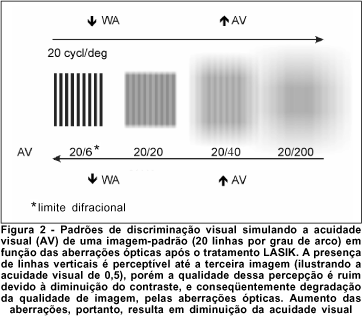The mean values for all the Zernike coefficients are approximately zero, while the individual variability is very high, what means that humans as a species in general have a very good optical system, though individually imperfect. Some temporal instability of higher-order aberrations, whose largest source is accommodation has been described. There arises a new question: will the correction of all the aberrations for the non-accommodated state of the eye be as beneficial for the near sight also? It is possible to modify and decrease the optical aberrations by a process of photo-ablation carried out by a scanning spot LASER with the wavefront data serving as a basis for the customized ablation profile. Perfect alignment of the LASER beam on the eye by means of high frequency eye trackers is fundamental. The theoretical visual benefit by correcting the higher order aberrations is up to 12 times. The main goal of the wavefront-guided treatments is not to allow the decrease in visual acuity after refractive surgical treatments, as may occur nowadays with the traditional LASER treatments; the next step would be treatments aiming at the improvement of visual acuity, as well as the treatments of highly irregular corneas (primary irregular, small or decentered ablations, central islands or irregularities after corneal transplantation). Understanding the new terminology and the bases of the new technological evolution, together with the continuous and critical follow-up of the new results in the literature, is the key of success of the modern approach to the problems related to refraction and refractive surgery.
Light; Corneal topography; Refractive errors; Visual acuity



